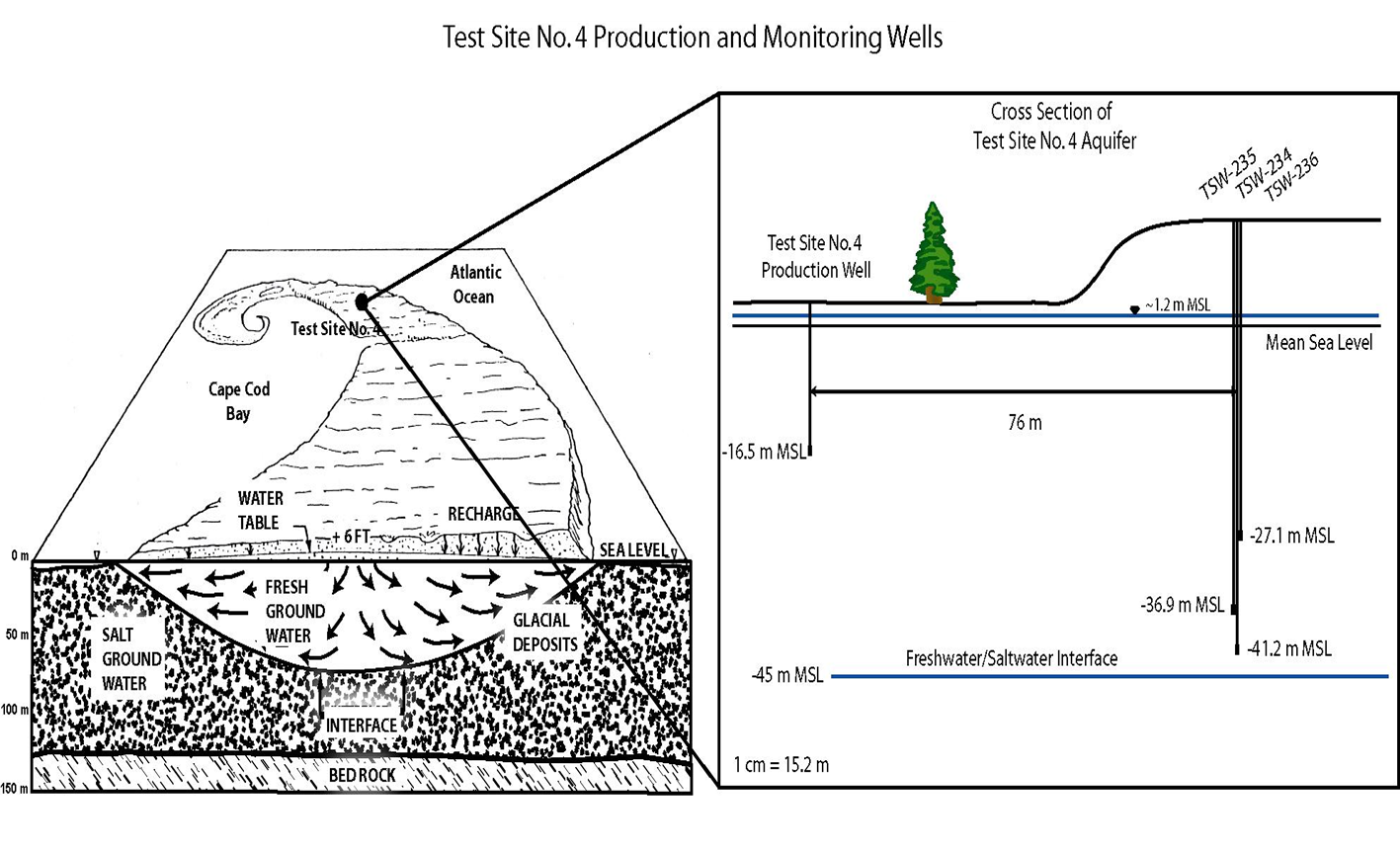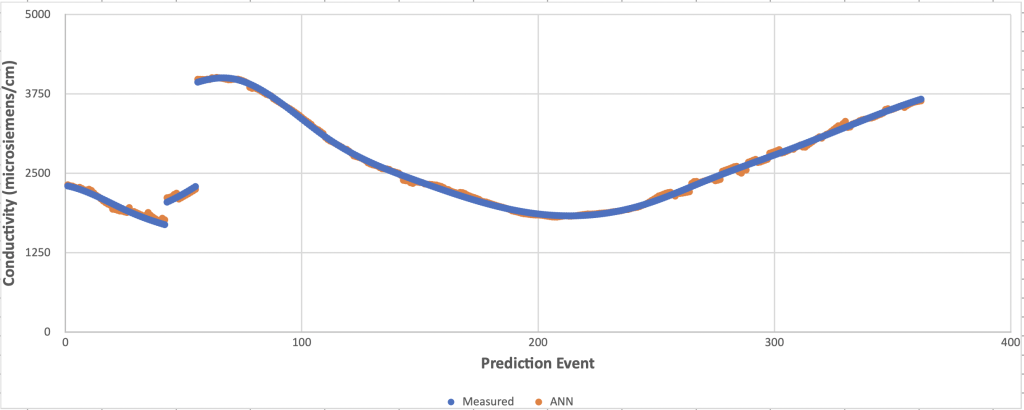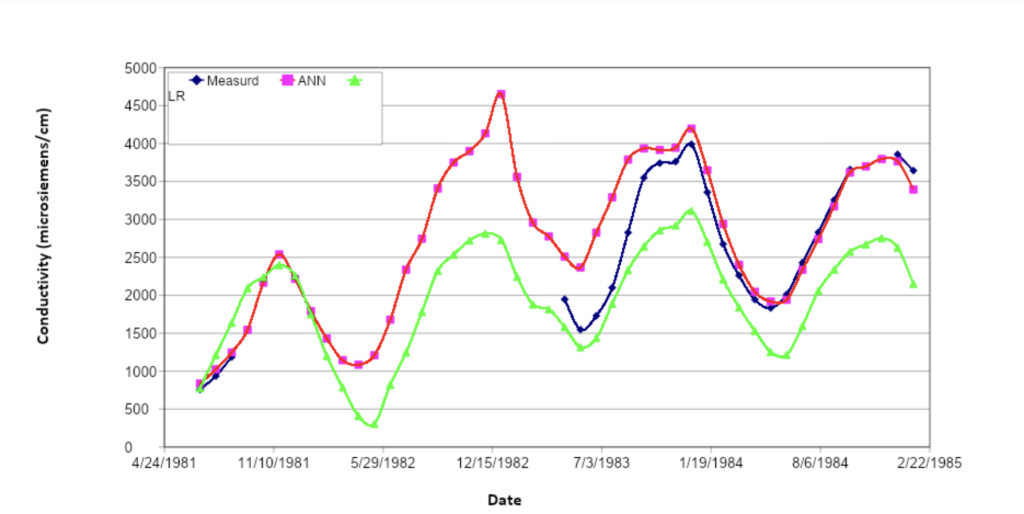Provincetown
Protecting a Public Supply Well from Saltwater Upconing with an AI Prediction Model
A staggering 40 percent of the world’s population live within 100 kilometers of the coast. Because of high-water demand in these densely populated coastal areas, saltwater intrusion and/or upconing of seawater into fresh coastal aquifers from over-pumping is a serious global problem. Just some of the major coastal cities with coastal aquifers impacted by saltwater degradation by over-pumping include New York City, Beijing, Barcelona, Cairo, Istanbul, Sao Paulo, and Sydney.
The encroachment of saltwater into freshwater coastal aquifers has serious economic, social, and environmental impacts, imposing real-time operational constraints and threatening the long-term sustainability of the aquifers. Sea level rise from climate change and increased groundwater pumping to meet growing water demand will only worsen this serious groundwater management problem in vulnerable high population coastal areas.
The modeling objective for this project, the first of its kind in the world, was to develop AI models using real-world data to accurately predict highly dynamic chloride concentrations in a coastal aquifer in response to variable pumping and weather conditions.
Provincetown, Massachusetts, a scenic coastal community and popular tourist destination located on the Cape Cod peninsula, has experienced saltwater upconing due to high groundwater extractions from its coastal aquifer. As shown by Figure 1, the community is located between Cape Cod Bay and the Atlantic Ocean, with its scarce fresh groundwater lens floating on top of denser seawater, which also laterally bounds the aquifer.
A single production well supplies the community with its water supply. Contrary to computer simulated predictions by government agencies, during higher pumping periods, the production well induces saltwater upconing, which significantly increases chloride concentrations in the drinking water that often exceed the acceptable drinking water quality limits. Therefore, the community required guidance on how to operate the production well to minimize the occurrence of these pumping induced salinity spikes.

Figure 1. Study Area and Hydrogeologic Cross-Section with Wells
For this project, AI models were developed to predict specific conductance (i.e., salinity) values in the production well one month, two months, and three months ahead. The AI models used a combination of specific conductivity, pumping rates, and weather conditions as the input variables used for predicting the future conductivity values.
Model accuracy was compared against measured/interpolated conductivity values and a linear regression model (LR). The AI models achieved excellent prediction performance. For example, although the average percent change of conductance over 90-day prediction periods was 39% of the previous value, the absolute mean prediction error achieved with the AI model was just 1.1%. Figure 2 compares measured versus AI predicted conductance values for the 3-month prediction period.

Figure 2. Measured versus ANN Predicted Conductivity Values for 3 Months Ahead Prediction Periods
To assess AI’s ability to perform long term predictions, AI was used to simulate monthly conductivity values over an extended 46-month prediction period using monthly stress periods. For this extended simulation, the AI model re-initialized itself with its previous prediction for each subsequent monthly prediction. In this way, AI’s ability to perform an extended multi-year prediction using monthly weather and pumping data was evaluated. Model accuracy was compared against measured/interpolated conductivity values and a linear regression model (LR), and in general, excellent predictive performance with the ANN models was achieved.
As shown in Figure 3, for the 46-month extended period simulation, the AI model accurately reproduced the almost four-year period, accurately predicting individual measured conductance values measured at the end of the prediction period. In contrast, the LR model did not provide accurate predictions over the extended prediction period, significantly underestimating the measured conductance values over the final 1.5 years. Note that conductance values were not available for comparison for all time periods, but the valleys and peaks correspond with higher and lower pumping periods that are driven by seasonal variations in demand.

Figure 3. Measured versus ANN and LR Predicted Conductivity Values for a 46 Month Extended Simulation Period
A sensitivity analysis was also performed with the AI model to identify the relative importance of different variables on salinity concentrations in the public supply well. Unlike traditional physical-based models, where model parameter compensation and non-unique solutions can render sensitivity analysis questionable, the AI models can clearly show direct cause and effect relationships.
Sensitivity analyses conducted with the AI models demonstrate that while weather is somewhat important for predicting conductance, pumping rates and initial conductance values are the most important variables for accurately predicting final conductance values. Interestingly, the effect of weather conditions like temperature and precipitation become more important over longer prediction periods (e.g., 90 days), which physically makes sense as their individual and combined effects on critical factors like groundwater recharge become more pronounced over longer time periods.
This project demonstrated the power of AI for accurately modeling salt-water upconing in a coastal aquifer in response to variable pumping and weather conditions. The higher predictive accuracy achieved with the ANN results in identification of superior management solutions that protect the drinking water supply against water quality degradation.
